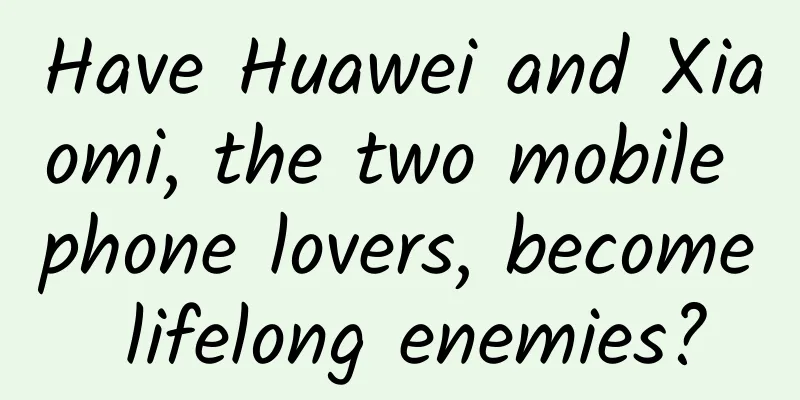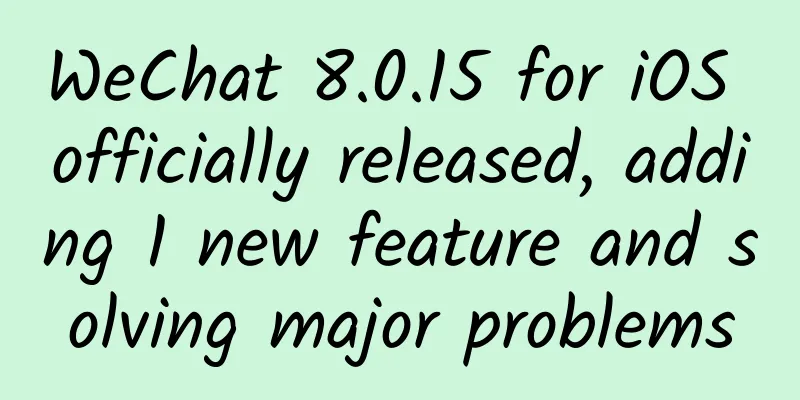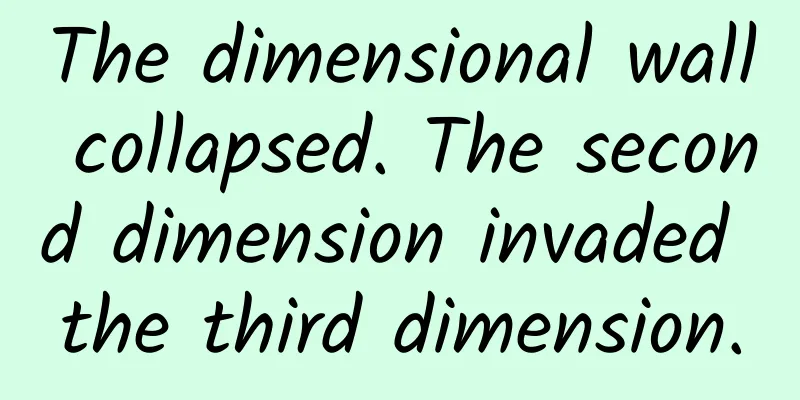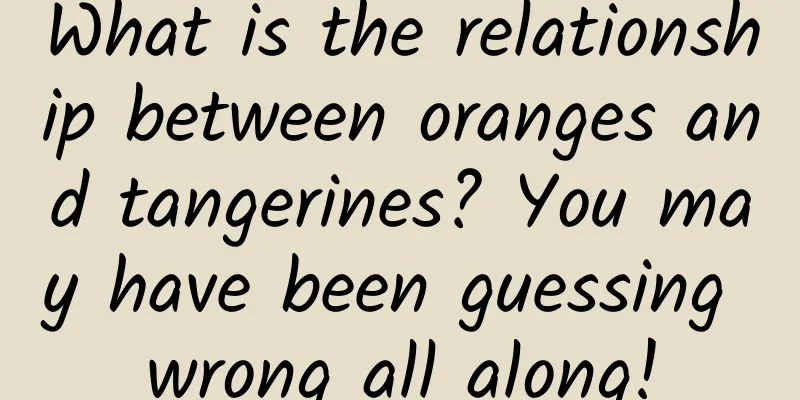Have Huawei and Xiaomi, the two mobile phone lovers, become lifelong enemies?

|
When Xiaomi was close to becoming a legend in 2014, Huawei took a zigzag approach. Yu Chengdong, born in the 1960s, went against Huawei's tradition of "resisting temptation, not taking shortcuts, working hard and self-criticism" and took over from Meizu's Huang Zhang to start attacking Xiaomi on new media. At that time, Yu Chengdong was like a clown in Lei Jun's eyes. He said earnestly on Weibo, "Huawei terminals are not essentially equal to Huawei. The unscrupulous practices of some people have seriously tarnished Huawei's extremely valuable brand and made everyone heartbroken." This was the first direct confrontation between the two sides since the establishment of Huawei's mobile phone business department in July 2003. Two years later, Huawei's consumer BG is getting better, while Xiaomi's ultimate single product has stagnated. But has Huawei, which is at the peak of its popularity, really knocked Xiaomi to the ground and stepped on it with ten thousand feet? Huawei's pride and Xiaomi's resentment Huawei has two watershed moments in history. In its early years, it was engaged in enterprise-level communication equipment and its battle with Cisco was very inspiring, but its public image still remained in the vague scenes of deification in reportage. In the mobile era, Huawei gradually became the totem of Chinese manufacturing and innovation. First, it defeated its old rival in the north, Lenovo, which was constantly reviewing and acquiring, but in fact had astonishing internal consumption; second, it successfully withstood the challenges and impacts of Internet upstarts such as Xiaomi. Looking around the world, very few old technology companies have the same presence as Huawei. Ren Zhengfei's Huawei "never wastes strategic resources on tactical opportunities". Huawei's revenue is four times that of Tencent, but the profit is almost the same. This is the driving force for change. In 2015, the operator business, which achieved revenue of 232.3 billion yuan, contributed 59% of Huawei's revenue. This is due to the massive 4G network construction campaign started in 2014 by 480 operators in 157 countries around the world. Ericsson, Alcatel-Lucent and ZTE are all beneficiaries, and Huawei has gained the most. However, the peak of basic investment has passed, the market is slowing down, and winter is coming. In addition to the hype of the 5G concept, which is not yet established, Huawei can only rely on the consumer BG. The Consumer BG run by Yu Chengdong contributed 129.1 billion yuan in revenue last year, achieving a year-on-year growth of 72.9%, the highest among Huawei's three main businesses. Huawei's smartphone shipments of 108 million units throughout the year were the main support for this positive news. Against the backdrop of a sluggish global consumer market, no eye-catching breakthroughs in mobile phone technology, and Apple's stock price plummeting, it is conceivable that this success would particularly trigger Lei Jun's "bad mood." There are many reasons why Huawei is so lucky: For example, Huawei's relatively moderate sales strategy is neither like ZTE and Coolpad, which suffered heavy blows in 2014 when operators concentrated on reducing subsidies, nor like Xiaomi, which relied too much on online sales and fell into trouble after its marketing momentum faded. Huawei's plus point is the continuous improvement of its brand power and product power, and Ren Zhengfei's "quotation factory" is in no way inferior to Xiaomi's marketing that promotes participation. As for internationalization, Huawei has the capital to be proud of, but the more hidden reason is that consumers have different demands on Huawei. It is normal for the iPhone, which pursues high added value with fashion and technology, to have poor sales in a two-year product cycle; Samsung, which is keen on streamlining its product line, is sacrificing sales in exchange for profits; Xiaomi is busy building its ecological chain to the point of being distracted. In comparison, it is reasonable for Huawei's mobile phones, which are balanced in technology, appearance, experience and price, to surface in 2015. Lei Jun went against the spirit of his internal speech on getting rid of KPI at the beginning of the year and used IDC and HIS data to compete with Huawei's GFK data on various stages, eager to maintain Xiaomi's title of "No. 1 in shipments". This can be understood as the resentment and injustice caused by the fact that the advantages accumulated by an Internet startup company with great efforts were instantly wiped out by the huge resources and system power of traditional technology giants. Full industry support and ultimate single product Lei Jun viewed Yu Chengdong's imitative Weibo harassment as a minor problem, or as Lenovo's lip service but lack of delivery in its insistence on PCs. He underestimated Huawei's ability to integrate its resources. Xiaomi's ultimate single product strategy was extended from smartphones to other industries too early. Although it was inevitable, it was also too hasty. The reason why Huawei's success is so impressive is that according to the innovation logic of the past decade or so, traditional technology companies have a strong sense of powerlessness when the market undergoes drastic transformation. Cloud totems such as Nokia, Microsoft, Sony, IBM, Lenovo, Motorola, and BlackBerry have quickly fallen to earth and become playthings of a new generation of rivals. Only Huawei, regarded as a "technology copycat master," has launched a counterattack. This in itself is puzzling and worthy of study. Huawei phones did three things right: First, since Yu Chengdong took office in 2011, Huijian cut off its ties with operators and turned to mid-to-high-end independent brands. The second is to shrink the product line and adopt a boutique strategy, focusing on the Honor, Mate and P series. Third, through the research and development of HiSilicon and Kirin processors, we have controlled the core costs of smartphones, which allows us to attack or defend. The genes for Huawei's mobile phone success are not simply product, technology and marketing breakthroughs, but the system crushing formed by omni-channel sales capabilities supported by a powerful system and the strategy and execution capabilities accumulated over many years. Corresponding to this is the decline in Xiaomi's focus. In 2014, Xiaomi released routers, boxes, flat-panel smart TVs, and air purifiers inspired by Jack Ma in addition to mobile phones. Those were Xiaomi's proudest days. It raised 1.1 billion in the E round of financing, and its valuation soared to 45 billion US dollars, ranking second among the world's top startups. By 2015, Xiaomi's product expansion was upgraded sharply, and it released the Xiaoyi sports camera, smart running shoes, Xiaomi TV 3, Xiaomi balance car, Xiaomi headphones, Xiaomi Tablet 2, Xiaomi Air Purifier 2 and Xiaomi Water Purifier, and even 2 mobile phone cards. Xiaomi diluted its smartphone resources to support the rapid expansion of the mobile ecosystem. Lei Jun correctly estimated that Xiaomi's dual-brand strategy and the residual heat of its fan economy could withstand the squeeze from the likes of Meizu and Hammer, but he ignored Ren Zhengfei, who was accustomed to sitting on a three-legged chair, and Huawei was not another Lenovo as he imagined. Let's not talk about the difference in shipments and sales volume - perhaps no one can figure out how many Huawei and Xiaomi phones are being played with by users or lying in the warehouses of operators or channel dealers. What is certain is that Huawei's omni-channel sales capability is stronger than Xiaomi. In 2014, Honor, which originally focused on e-commerce sales, fully entered the offline market, with public channel revenue accounting for more than 41%. In 2015, Huawei terminals had as many as 1,400 direct channel customers in 135 countries, and public channel revenue increased by more than 130% year-on-year. Huawei has also achieved physical service store coverage with a 5-kilometer axis in key cities, while Lei Jun's repeatedly emphasized "Mi Home" is still at the vision level of expanding 200-300 stores. Therefore, the rise of Huawei mobile phones is not so much due to Yu Chengdong's big-mouthed marketing, which is better than his predecessor in the post-Li Wanqiang era, but rather to the fact that Huawei has not been listed for 28 years and has a ruthless attitude that sees no taboos. This was particularly lethal in 2015 when Huawei's brand power reached its peak. Huawei and Xiaomi are both in relative decline This conclusion may not be agreed by Mi fans and Huawei fans. When Apple lost its position, the world would chase it. Domestic smartphones have quickly formed a politically correct strategic cognition in the post-Jobs era, that is, they are talking about Apple, staring at Samsung, and kicking Xiaomi. As the saying goes, "the sun is at its zenith and then sets, the moon is full and then wanes", the rotation of Xiaomi and Huawei is not necessarily a blessing. Both companies have difficult issues to solve: First of all, whether to fight for the empty title of the first in shipment volume. When Sun Quan advised Cao Cao to "take the throne early", Cao Cao complained, "You want me to sit on the fire?" The empty title of the first in shipment volume often requires the support of a large number of cheap equipment. Lei Jun and Yu Chengdong are well aware of the feeling of being at the top, but they can't "not fight for the gains and losses of a city or a place". It is an indisputable fact that Xiaomi's brand and product power reached a turning point in 2015. The marketing gap originally driven by the Mi Fan Economy was gradually filled by its competitors. It was indeed a troubled time. However, Lei Jun still holds a strategic opportunity in 2016, that is, Huawei's mobile phones have not hurt Xiaomi at least in the two fields of high-cost-effective products and young groups. Huawei's huge and constantly increasing shipments have not yet been transmitted to the existing user level, resulting in a mismatch between market voice and user presence. According to talkingdata's mobile device coverage in Q1 this year, Xiaomi still surpassed Huawei's 7.94% with 10.2%, and in the Android active device rankings, Xiaomi retained 7 seats in the top 10. The situation of Umeng is similar, which proves that it will take some time for G, Y and Changwan series to fight Redmi. Richard Yu said that it would take 5 years to surpass Apple, and Lei Jun said that he would keep his curiosity. Both of them were a bit disingenuous. Xiaomi will certainly explore forward-looking technologies and refined operations, but the top priority is to sort out the industrial chain and ensure production capacity. Whether Huawei really wants to surpass Apple and whether it can surpass Apple is not discussed, but surpassing Xiaomi first is definitely written into its KPI. What both companies urgently need is not disruptive innovation, but black technology that can be stuffed into mobile phones to support sales. Huawei's 2012 Laboratory previously secretly developed the iMax perception platform, attempting to provide users with high-frequency services such as food, clothing, housing and transportation by skipping the APP through the bottom-level entrance. The first adapted model will be launched this summer. According to the rhythm of Huawei's press conferences, Mate is at the end of the year, P is at the beginning of the year, and Honor is generally in the middle of the year. This should be a mid-range mobile phone. The lack of technological innovation and only reliance on experience patches means that the cost of trying out new things for consumers is reduced, and that Huawei and Xiaomi are losing their unique temperament. This is the process of relative decline. This is the case with the iPhone, and Huawei and Xiaomi are no exception. The second issue is who can take over the market share lost by Apple and Samsung. Last year, Samsung maintained its sales despite negative news, but according to Gartner data, its sales in the first quarter of 2016 dropped to over 81 million units from over 83 million units in the previous quarter. Apple's quarterly decline was even greater, from 60 million to 51 million units. Xiaomi's sales remained at around 15 million units, and only Huawei and OPPO's sales increased by tens of millions. According to data from Kantar Worldpanel, IOS's market share in Europe and North America declined in Q1 2016, remaining at around 18-25%, while IOS's market share in China has not increased since August 2014, falling to 14.62% in Q1 2016. This coincides with the rise of Huawei and Xiaomi, which can easily lead to inferences and assumptions. Apple's closed system has its own rationale for existence. Although it faces increasingly strong challenges, it can only be defeated but not eliminated. Moreover, its current share in China has fallen back to a reasonable range, and brand support will form a strong resistance level. What Huawei and Xiaomi can only count on is the Android civil war, and the target is of course Samsung. The highlight is the atypical competition between Huawei and Samsung, two old technology companies that do not have much Internet genes. Huawei has found patents as its weapon, but Samsung, who is not to be outdone, is ready to countersue. The victory or defeat after the preliminary battle depends on two points: 1. Can Huawei become a substitute for Samsung's brand connotation? Unlike the declining aristocrats Sony and Sharp, the latter is a company with strong hardware integration capabilities and one of the few companies that can promote hardware innovation. Correspondingly, it has industrial design capabilities second only to Apple, which are what Huawei's brand power needs to penetrate. 2. Competition in the international market. Samsung’s mobile phone market share is about 24%, and the sales volume of 80 million in one quarter is definitely not something that the domestic market can digest, so the two well-known KPI-oriented companies will compete again in Europe and the United States. Xiaomi's dilemma is that it does not have a single product priced above 3,000 yuan to fill the vacuum left by Apple and Samsung, and its mid- and low-end products are being poached by Huawei. Lei Jun's response is probably twofold: 1. Develop high-end brands. From the internal speech at the beginning of the year, we can know that Lei Jun tried to fill the brand connotation of Xiaomi with refined operations, offline services and forward-looking research, which shows that he has the ambition to enter the high-end market, but it may be too late to think about breaking away from the long-term dependence on young consumer groups. 2. Mobile ecology. Xiaomi has stretched its hands too far and made too many enemies, but there are not many products with real weight in the ecological chain. This is all attributed to the fact that it has forgotten the original intention of "just have fun and enjoy the fun". So there are drones and rice cookers. Lei Jun can't go back on the road of perfecting the ecological technology tree and countering Huawei's system advantages. The business world is like a sports field, where victory or defeat is unpredictable. Lei Jun, who works 7x16 hours a week, and Yu Chengdong, who can't sleep at 6 o'clock, are just like the two young stars of the Thunder and the Splash Brothers of the Warriors. They can just do their best and leave the rest to fate. As a winner of Toutiao's Qingyun Plan and Baijiahao's Bai+ Plan, the 2019 Baidu Digital Author of the Year, the Baijiahao's Most Popular Author in the Technology Field, the 2019 Sogou Technology and Culture Author, and the 2021 Baijiahao Quarterly Influential Creator, he has won many awards, including the 2013 Sohu Best Industry Media Person, the 2015 China New Media Entrepreneurship Competition Beijing Third Place, the 2015 Guangmang Experience Award, the 2015 China New Media Entrepreneurship Competition Finals Third Place, and the 2018 Baidu Dynamic Annual Powerful Celebrity. |
Recommend
Development of clothing WeChat applet, how to create WeChat applet in the clothing industry?
Our lives have become increasingly dependent on t...
For every pet otter, there are four or five dead companions
Not long ago, Guokr held a Youth Forum with the t...
How to find out the reason for the sudden drop in website traffic?
The most critical task of website operation is tr...
If your product has no unique features, how can you attract users’ attention?
Among a bunch of products with similar selling po...
Will GitHub's App be open source?
As early as the GitHub Universe conference in 201...
With a budget of 150,000 yuan, Qin Plus, AION and Geometry A, which one is the first pure electric car for young people?
With the entry of the new energy vehicle concept,...
The dream of a minimalist smartphone is beautiful, but the reality is bleak
On July 1, Wired published an article saying that...
What do alien life forms look like, and what is the ultimate evolutionary goal of intelligent life forms?
Many netizens have asked about this question. It ...
Historical review: those crazy mobile phone designs ten years ago
[51CTO Translation] With the announcement of the ...
Second-tier e-commerce marketing | Secrets to creating hot-selling products in the jewelry and watch industries!
In the past two years, jewelry, accessories and w...
How will 360 search advertising promotion information be displayed and what are the conditions for displaying it?
How will my promotional information be displayed?...
Why can the tempered glass of the side windows, which is difficult to break with the seat headrest, be easily shattered by a window breaker?
Every summer, typhoons wreak havoc. The accompany...
Chinese Academy of Sciences releases blue book on forest fire carbon emissions! | Expo Daily
Chinese Academy of Sciences releases blue book on...
Want to say goodbye to the Home button? It's not as easy as you think
Nowadays, there are fewer and fewer buttons on mo...
Electric Technology Car News: 7 seats + DCT SAIC's new Baojun 560 can save the declining sales
I believe everyone is familiar with the Baojun 56...









